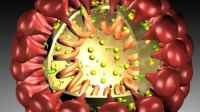Revolutionary Portraits from Turkey - Mahir Çayan
Beyond coming to the fore as a leader within a revolutionary movement in a particular period, some revolutionaries appear in the history as the vanguards of a revolutionariness tradition. Mahir Çayan of Turkey is one of them. With his understanding and practice of revolutionary struggle, which had been always trying for new revolutionary horizons, he stands as a living source for any revolutionary to keep his*her will alive under any condition and time.
Mahir Çayan started to involve in the active revolutionary struggle by the time he registered to Ankara University, the Faculty of Social Science (SBF) at 1964. He immediately became active within the SBF Federation of Idea Clubs (FKF), the main revolutionary student organization that is organized in different universities of Turkey at that time. Along with participating in the student youth actions, such as the great protests against US 6th Fleet in '68 and faculty boycotts and occupations, he also did did mass works in the name of Workers Party of Turkey (TİP), which the revolutionary youth was mostly organized under. However, by the time the youth movement got more involved in doing politics with their own dynamic power, including the impact of China, Cuba and Vietnam revolutions, TİP, as being close to Soviet Union, became unable to be a respond militancy of the youth manifesting itself at universities as well as out in the streets. Mahir was one of the leaders who were criticizing TİP's ideological-political line by finding it parliamentarian and pacifist. Finally this conflict exposed itself within TİP under a general debate about the “question of revolution” and resulted in a split where the majority of the revolutionary youth, so as Mahir, sided with the National Democratic Revolution (MDD) ranks rather than those adopting Socialist Revolution (SD) strategy.
While spreading his impact among the youth movement as a leading militant against increasing state repression and fascist attacks, Mahir kept on developing his theoretical-ideological works in the context of Turkey's particularity. In the articles and booklets published in various revolutionary magazines at that time, particularly his works of “Uninterrupted Revolution I-II-III”, he formulated his thoughts being primarily focused on his concept of the artificial equilibrium. According to him, there is an artificial equilibrium existing between the state and people's reactions in Turkey due to no-colonialism's particular form of exploitation, which maintains the imperialist invasion in a hidden way and brings a comparative wealth to the society. From this point, he concluded that the revolutionary strategy has to be a war strategy, in his terms, the politicized military war strategy (PASS), which would be conducted by a combatant vanguard party in order to break this artificial equilibrium and awaken the masses to participate in doing the peoples' revolution.
So, on the eve of the junta conditions, Mahir and his comrades turned their way to undertake the construction works of the People's Liberation Party-Front of Turkey (THKP-C) towards the armed struggle. According to Mahir and his comrades, the armed struggle was an inevitable step to create an organized revolutionary departure for the coming battle, instead of letting the accumulated revolutionary experience and power of '68 be drowned by the spontaneity. Thereafter, this move of Mahirs, as well as of others led by Deniz Gezmiş and İbrahim Kaypakkaya, became symbolized as the “71' rupture” in the literature of the revolutionary history of Turkey and North Kurdistan.
After the Turkish army gave the military note on 12th March 1971, Mahir and his comrades declared their will to respond the junta with a revolutionary fight under the perspective of deepening the existing crisis. So, by adopting the urban guerrilla model in the context of armed propaganda as the initial step for the PASS, THKP-C started to carry out various actions, such as bank robberies and abductions. Mahir Çayan was playing a major role in both planning and executing processes of these actions. On June 1, 1971, after the abduction action of the Israeli Consulate General, Ephrahim Elrom, he got caught as wounded and arrested while his comrade Hüseyin Cevahir was killed by the police. However, 5 months after, he escaped from the prison with 4 other comrades, 2 of which were belonging to People's Liberation Army of Turkey (THKO). The fascist bourgeois order were looking for these young revolutionaries everywhere and the conditions were getting worse to survive as clandestine. Some of his comrades offered him to leave the country, but he rejected and started to work on an action plan in order to save the lives of his comrade-in-arms, the three leading cadres of THKO, Deniz Gezmiş, Yusuf Aslan and Hüseyin İnan, who had been sentenced to death by the junta. Finally, THKP-C and THKO militants under the leadership of Mahir Çayan organized a common action and kidnapped 3 British technicians working in NATO Radar Station in return for stopping the executions. The fascist junta did not approach for a deal and 4 days after, on March 30, 1972, they were besieged by the army in a house located at Kızıldere village. The calls for surrender of the soldiers were responded by Mahir as “we did not come here to turn back, we came here to die”. There, they fought bravely against the massive force of bourgeoisie's army and together with his other 9 comrades, Mahir Çayan marched to immortality.
The meaning of Mahir Çayan as a revolutionary, can be understood easily by examining the relationship that he builds with the existing reality. In that sense, his life stands as an example itself purely exposing a basic feature of the revolutionariness; to be positioned as an active subject towards the existing reality. Mahir had always looked for holding existing conditions in the context of the possibilities for the revolution and simultaneously got in the action in order to make these possibilities come true. However this does not represent a blind desire of him causing to a superficial manner of a rash activism. But rather it is an expression of a strong ideological attitude equipped with a burning revolutionary soul that actually creates the possibilities and moves forward on them bravely within a strategical frame. For Mahir, this strategical frame was meaning to become a vanguard, to organize a vanguard structure in order to open a revolutionary path that is needed to actualize the possibility of revolution not only for their time, but above all, for winning the future.
Thus, Mahir and his comrades took the responsibility of creating a revolutionariness tradition by breaking with the old and leaping forward to a realm far beyond the limits of the order. With his unyielding revolutionary will both in the sense of consciousness and practice, Mahir played his vanguard role to create that realm with the '71 rupture and to embody it by giving the most meaningful examples of the revolutionary values such as braveness, courage, sacrifice, labor, faith, determination, comradeship, solidarity, will, resistance, struggle, uncompromising anger against enemy and desire for the victory... With all these, Mahir keeps on calling for the creation of the revolutionary subject, for keeping the hope alive.
Document Actions




